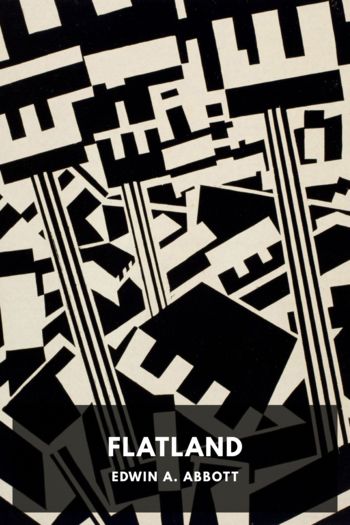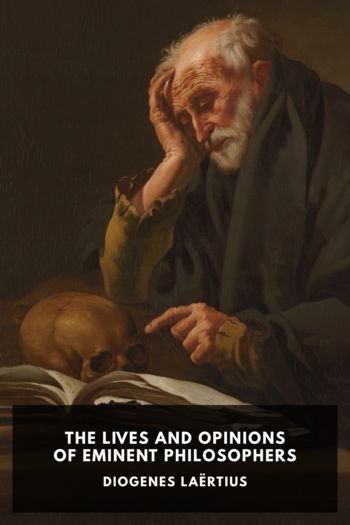Flatland Edwin A. Abbott (most romantic novels .txt) 📖

- Author: Edwin A. Abbott
Book online «Flatland Edwin A. Abbott (most romantic novels .txt) 📖». Author Edwin A. Abbott
But I must not allow questions of School Board politics to divert me from my subject. Enough has been said, I trust, to show that Recognition by Feeling is not so tedious or indecisive a process as might have been supposed; and it is obviously more trustworthy than Recognition by hearing. Still there remains, as has been pointed out above, the objection that this method is not without danger. For this reason many in the middle and lower classes, and all without exception in the Polygonal and Circular orders, prefer a third method, the description of which shall be reserved for the next section.
VI Of Recognition by SightI am about to appear very inconsistent. In previous sections I have said that all Figures in Flatland present the appearance of a straight line; and it was added or implied, that it is consequently impossible to distinguish by the visual organ between individuals of different classes: yet now I am about to explain to my Spaceland critics how we are able to recognize one another by the sense of sight.
If however the reader will take the trouble to refer to the passage in which Recognition by Feeling is stated to be universal, he will find this qualification—“among the lower classes.” It is only among the higher classes and in our temperate climates that Sight Recognition is practised.
That this power exists in any regions and for any classes is the result of fog; which prevails during the greater part of the year in all parts save the torrid zones. That which is with you in Spaceland an unmixed evil, blotting out the landscape, depressing the spirits, and enfeebling the health, is by us recognized as a blessing scarcely inferior to air itself, and as the nurse of arts and parent of sciences. But let me explain my meaning, without further eulogies on this beneficent element.
If fog were nonexistent, all lines would appear equally and indistinguishably clear; and this is actually the case in those unhappy countries in which the atmosphere is perfectly dry and transparent. But wherever there is a rich supply of fog, objects that are at a distance, say of three feet, are appreciably dimmer than those at a distance of two feet eleven inches; and the result is that by careful and constant experimental observation of comparative dimness and clearness, we are enabled to infer with great exactness the configuration of the object observed.
An instance will do more than a volume of generalities to make my meaning clear.
Suppose I see two individuals approaching whose rank I wish to ascertain. They are, we will suppose, a Merchant and a Physician, or in other words, an Equilateral Triangle and a Pentagon: how am I to distinguish them?
It will be obvious, to every child in Spaceland who has touched the threshold of Geometrical Studies, that, if I can bring my eye so that its glance may bisect an angle (A) of the approaching stranger, my view will lie as it were evenly between his two sides that are next to me (viz. CA and AB), so that I shall contemplate the two impartially, and both will appear of the same size.
Now in the case of (1) the Merchant, what shall I see? I shall see a straight line DAE, in which the middle point (A) will be very bright because it is nearest to me; but on either side the line will shade away rapidly into dimness, because the sides AC and AB recede rapidly into the fog and what appear to me as the Merchant’s extremities, viz. D and E, will be very dim indeed.
On the other hand in the case of (2) the Physician, though I shall here also see a line (D′A′E′) with a bright centre (A′), yet it will shade away less rapidly into dimness, because the sides (A′C′, A′B′) recede less rapidly into the fog; and what appear to me the Physician’s extremities, viz. D′ and E′, will be not so dim as the extremities of the Merchant.
The reader will probably understand from these two instances how—after a very long training supplemented by constant experience—it is possible for the well-educated classes among us to discriminate with fair accuracy between the middle and lowest orders, by the sense of sight. If my Spaceland Patrons have grasped this general conception, so far as to conceive the possibility of it and not to reject my account as altogether incredible—I shall have attained all I can reasonably expect. Were I to attempt further details I should only perplex. Yet for the sake of the young and inexperienced, who may perchance infer—from the two simple instances I have given above, of





Comments (0)